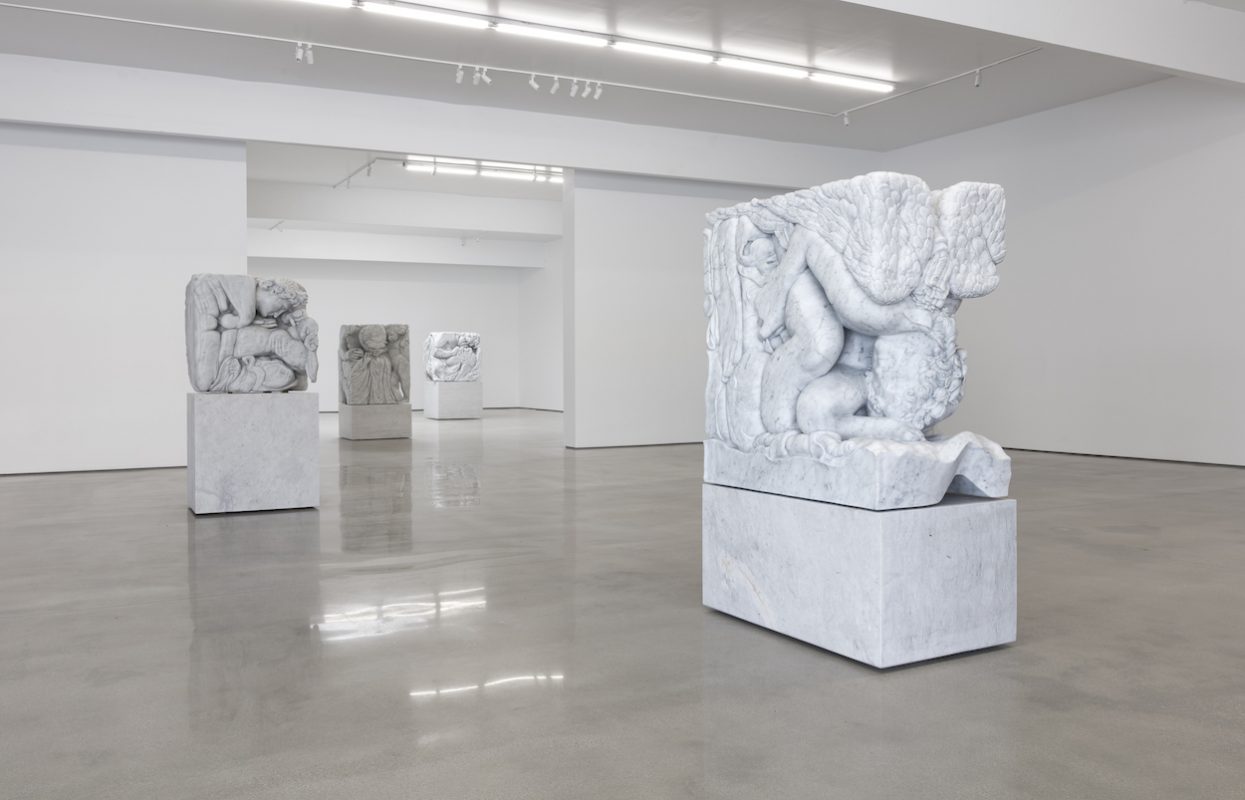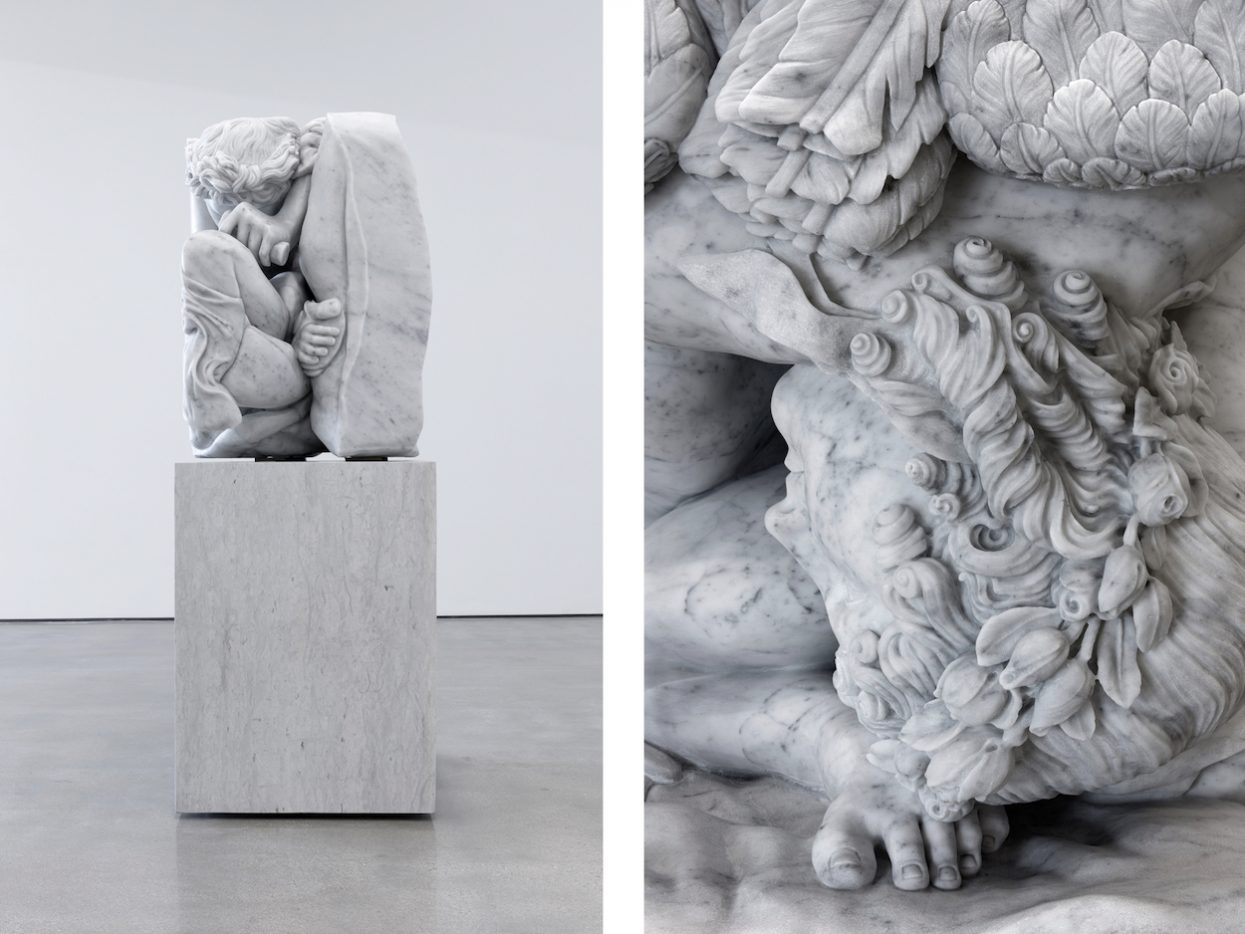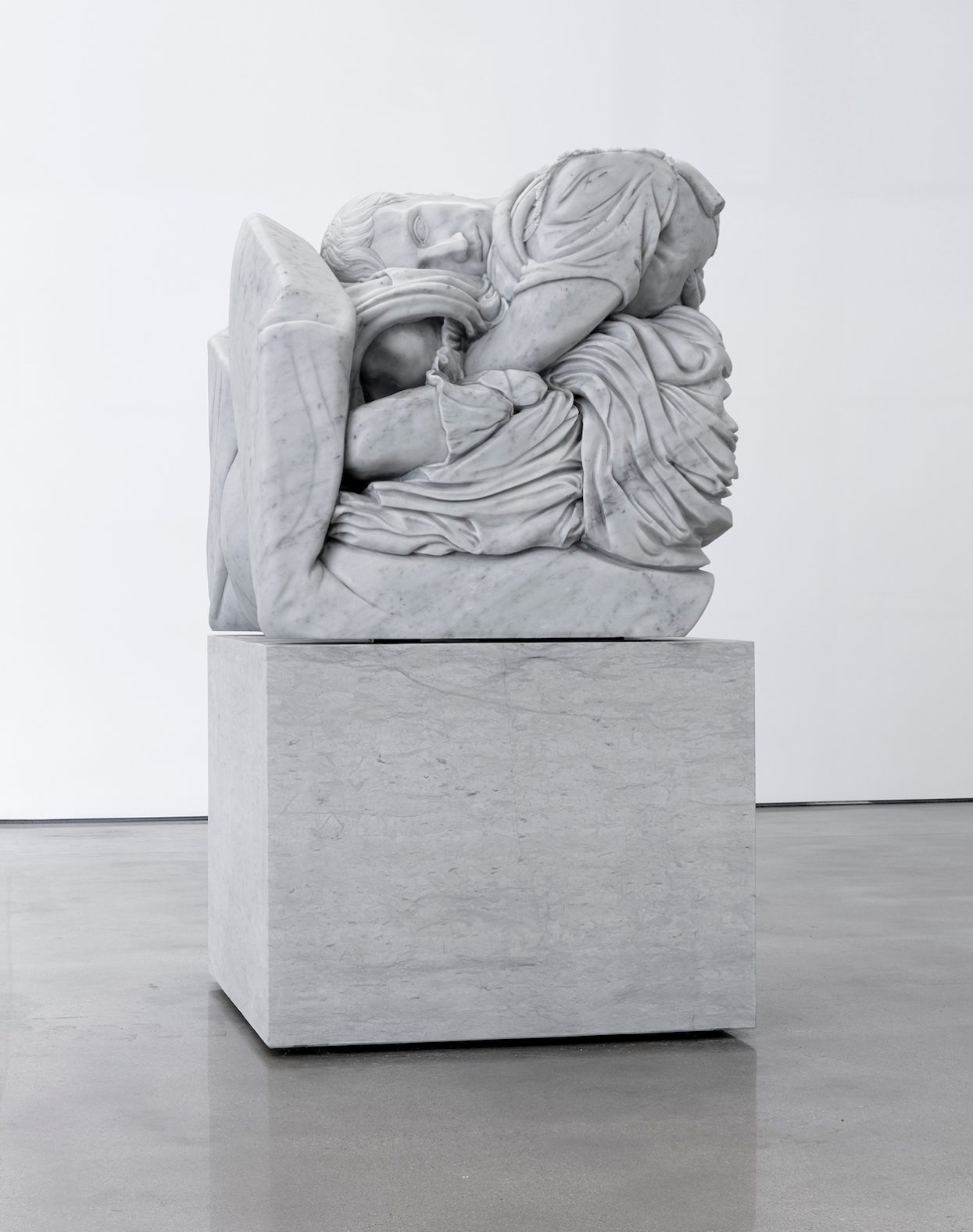Adam Parker Smith once quipped “I feel like so many of my ideas start out as jokes, for better or worse.” He’s long toyed with ancient forms, most notably by recasting Grecian amphoras in resin and slippery-looking spaghetti and red sauce. His latest endeavor sees the American talent condense the canon of Greco-Roman and Renaissance sculptures into ten-square-foot cubes of Carrara marble, as if they were tossed into a trash compactor or mimicking crystallized contortionists. On view at The Hole’s newly opened L.A. gallery until Aug. 20, the show has garnered buzz from within the West Coast creative sphere (not to mention the praise of Kelly Wearstler).
Fittingly titled “Crush,” the six works show Smith subverting the seriousness ascribed to classical sculpture. As the gallery notes, the statues were merely imitations of everyday life in ancient times and “may have held for the Greeks and Romans the same thrill of proximity as selfie-stick users today feel inside of a Madame Tussauds.” Rather than gazing in awe at the chiseled muscles of Gian Lorenzo Bernini’s David or pondering the cunning power wielded by Bertel Thorvaldsen’s Cupid Triumphant, which both appear in the show, today’s viewer may instead approach Smith’s renditions with a “how’d he do that?” curiosity and ponder the possibilities of digital tools interacting with antiquity.
To answer that question, Smith ventured to Rome to collaborate with a team of master carvers, a seven-axis reductive robot, and the Uffizi’s digital research teams. He initially rendered some of Hellenic and Baroque sculpture’s greatest hits in 3D modeling programs before compressing each digital form into a compact cube and painstakingly chiseling them from a Carrara marble block. (He documented this process on Instagram.) In doing so, Smith reduces each austere figure to a measurable unit—one that might be shipped or stocked in a warehouse—or by making them appear to be climbing their way out of a box. “When my work and I are in the studio together, I try to have it be as intimate as a relationship as possible,” Smith told Fernando Mastrangelo in a 2019 interview. “I just think about the most badass thing I could be doing in a studio. It’ll crush your creative parameters if you think about your work as a commodity.”
According to The Hole founder Kathy Grayson, the seven-foot-long works wouldn’t have fit inside either of the gallery’s New York locations, reinforcing her decision to relocate to a sprawling warehouse in Hollywood’s gallery district. “I was always jealous of the beautiful spaces here that aren’t possible in New York, like an 8,000-square-foot bow-truss warehouse with beautiful light where you can present different types of exhibitions,” she told The Art Newspaper ahead of Frieze Los Angeles in February, when the gallery opened. “As a curator/dealer, you have to be as ambitious as the artists.”



